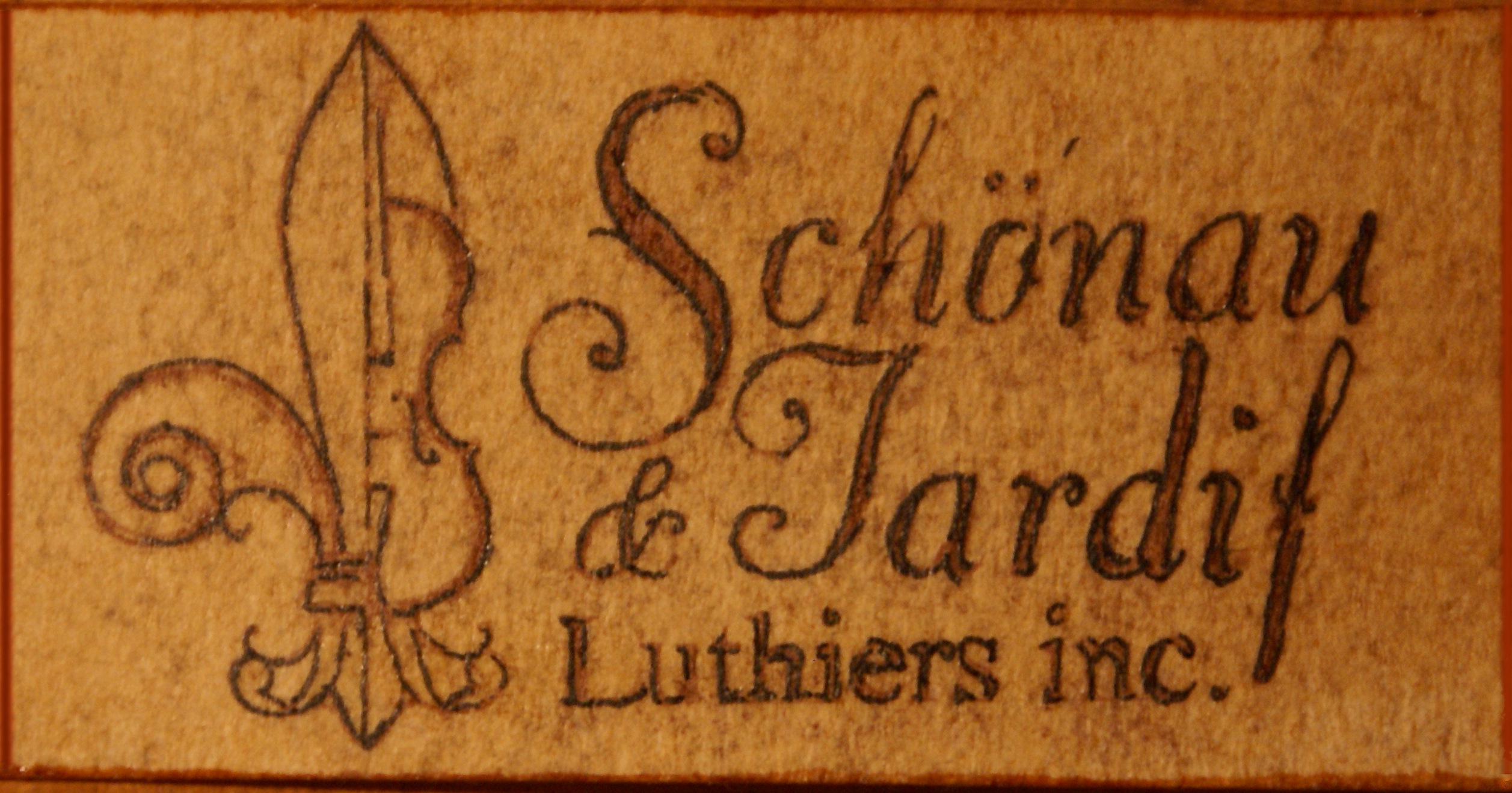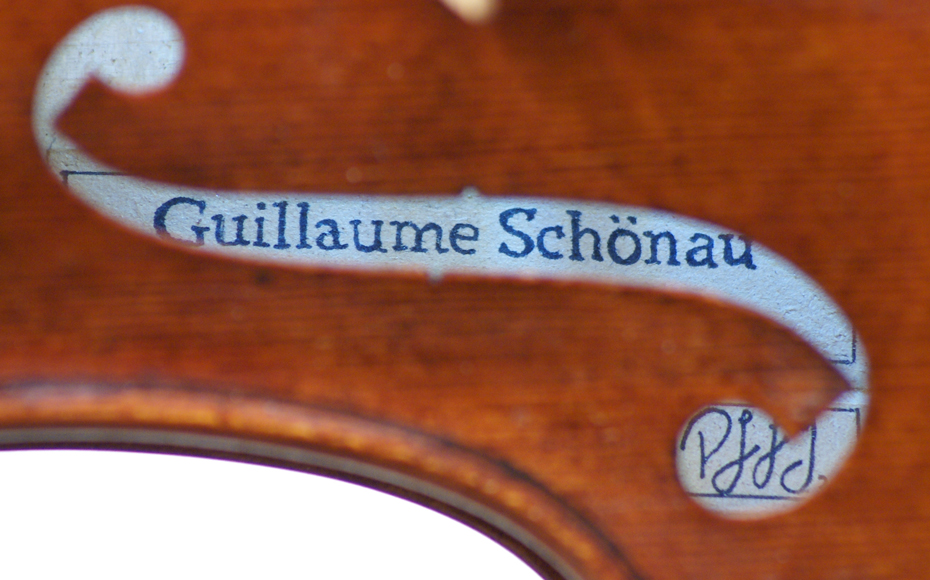
Violin G. Schönau, model antique Stradivari 1709
Violin G. Schönau, model Amati
Violin G. Schönau, vintage Stradivari model
Fabrication of a modern cello inspired by a Francesco Ruggeri, Cremona, c. 1690
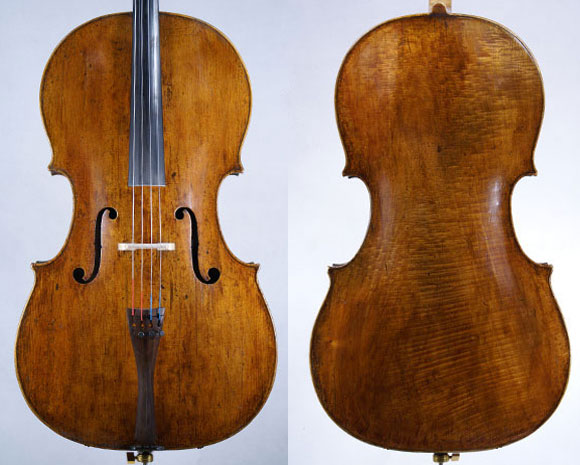
Project:
This project aims to study one of Cremonese’s greatest cello makers and produce a modern instrument from the observations of the original work.
Questioning is the origin of creation. Copying a work brings more questions than answers.
Why a cello based on a model by Francesco Ruggeri:
F. Ruggeri’s main contribution to the Luthier and musical universe was designing and manufacturing smaller cellos than were common in his day. These dimensions have now become references or standards for nearly all his contemporaries. The balanced and powerful sonority, the ease and playability make F. Ruggeri’s cellos more than desirable.
Evidently, the Ruggeri cellos are popular and buying a reproduction is a way of possessing a quality instrument, with direct inspiration and made using the same manufacturing methods.
Schönau & Tardif Luthiers Inc. wishes to thank the owner of this superb cello for his generous contribution to this project.
Science at Art’s Service
We proceeded to a 3D scan of the cello. To do this, we used the services of Créaform, a company specializing in 3D scanning and reverse engineering. The cello has been scanned and reproduced in three dimensions on a computer system, allowing me to access all necessary measures with a precision of 50 microns. The reconstruction of the forms gives me a lot of data: the arches of the top and bottom surfaces in addition to its features such as wear, tool marks, deformation, repairs, etc. It is accurate, rapid, and non-invasive for the instrument.

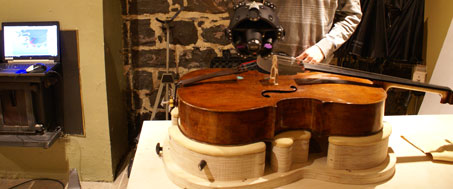
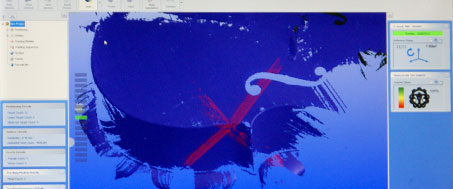
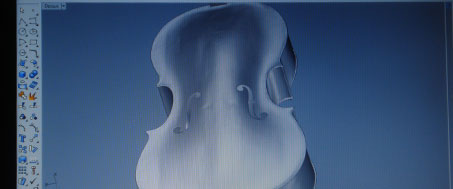
Vice-Versa
We now have a perfect virtual copy. This copy can be used to make moulds and templates directly from the computer to a system of CNC (Computer Numerical Control). A top mounted on a 5-axis system was used to make a replica, to scale, of top and bottom arches in a synthetic material.
The original instrument beside his 3D replica. This replica serves as a direct reference when making a copy.
I do not use CNC technology to fabricate parts of my cello. The arches are carved and shaped by hand using traditional manufacturing methods.
The traditional splint mould reflects Ruggeri’s cello deformations. The new instrument will be asymmetrically manufactured to try to get an accurate cello of the original model.
A digital thickness gauge provided me with the bottom of the thicknesses and the soundboard.
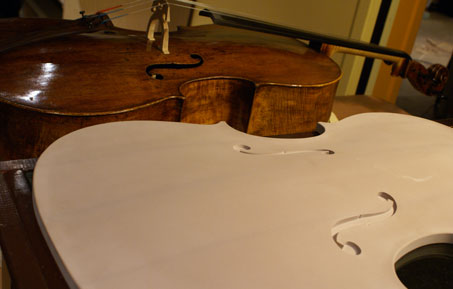

The Choice of Wood
The choice of a Luthier’s wood is of paramount importance for the sound of the string quartet instruments. The maple and spruce that I use comes from Europe, specifically Italy, Switzerland, and the Balkans. This wood comes same forests that have aroused the fervor of the greatest Luthiers for over four hundred years. I select the wood pieces according to criteria such as regularity of the annual circles, acoustic superiority, and density. Once selected, these parts are imported and stored a minimum of six years in a controlled environment before use. The majority of wood pieces dry for more than 15 years before being shaped.
Models
Italian master Luthiers developed the basics of technical drawing string quartet instruments more than 400 years. The sound quality of these instruments is more than enough to prove its efficacy. I work with a model based on the one used by Stradivarius for the realization known as Viotti, in 1709. For the viola, I use an Amati brothers’ model. For the cello, Francesco Ruggeri captures my interest. Its format allows me to design ergonomic and malleable instruments without affecting volume.
Varnish
Varnish improves the acoustic qualities of instruments, helps protect their passages of time, and is an essential for their beauty and soul. The oil varnish that covers my instruments consists of natural resin and linseed oil. This colored varnish, inspired by recipes from the Middle Ages and Renaissance, is reinforced by color lacquered pigments I get through extracting madder root (Rubia tinctorium). The legendary beauty of Italian lacquers is the inspiration and driving force of my research. I appreciate classic varnish very much. It is very clean and uniform. Just as much, I appreciate old patina varnishes that mimic the wear and the passage of time.
Time
Is the only ingredient unobtainable in the present. It leaves traces of its passage, as a patina varnish. It softens sonority and allows the real voice of the instrument to break through. It allows us to appreciate the quality of instruments throughout the years to come…
Sound
Judging the quality of sound is subjective. Just as enjoying a type of wine over another. We can still classify the sound of an instrument by certain aspects: volume, harmonic richness, and balance between treble and bass. In my opinion, what makes making stringed quartet instruments so interesting is the complexity of their sound. These qualities are already audible from the very first notes played on an instrument. String quartet instruments must be played and vibrated to optimally open their harmonic spectrum. Sound is refined without losing its basic character and its primary qualities.
Some musicians see “modeling” or “working” the sound of their instrument as a significant advantage to the sound of their instrument during its ripening period. For each hour that a musician practices, one hour is added to the sound quality of the instrument...an investment that gives back to those who enjoy it.
Acquisition
Ancient quality instruments are expensive and in some cases financially inaccessible. Buying a modern instrument might be the best solution. With the information available, new research in acoustics, and access to new technology, the skill level of modern luthier is increasing. Modern instruments, made by renowned Luthiers are good investments.
For more information, for questions and comments, or to schedule a test, please contact me.
